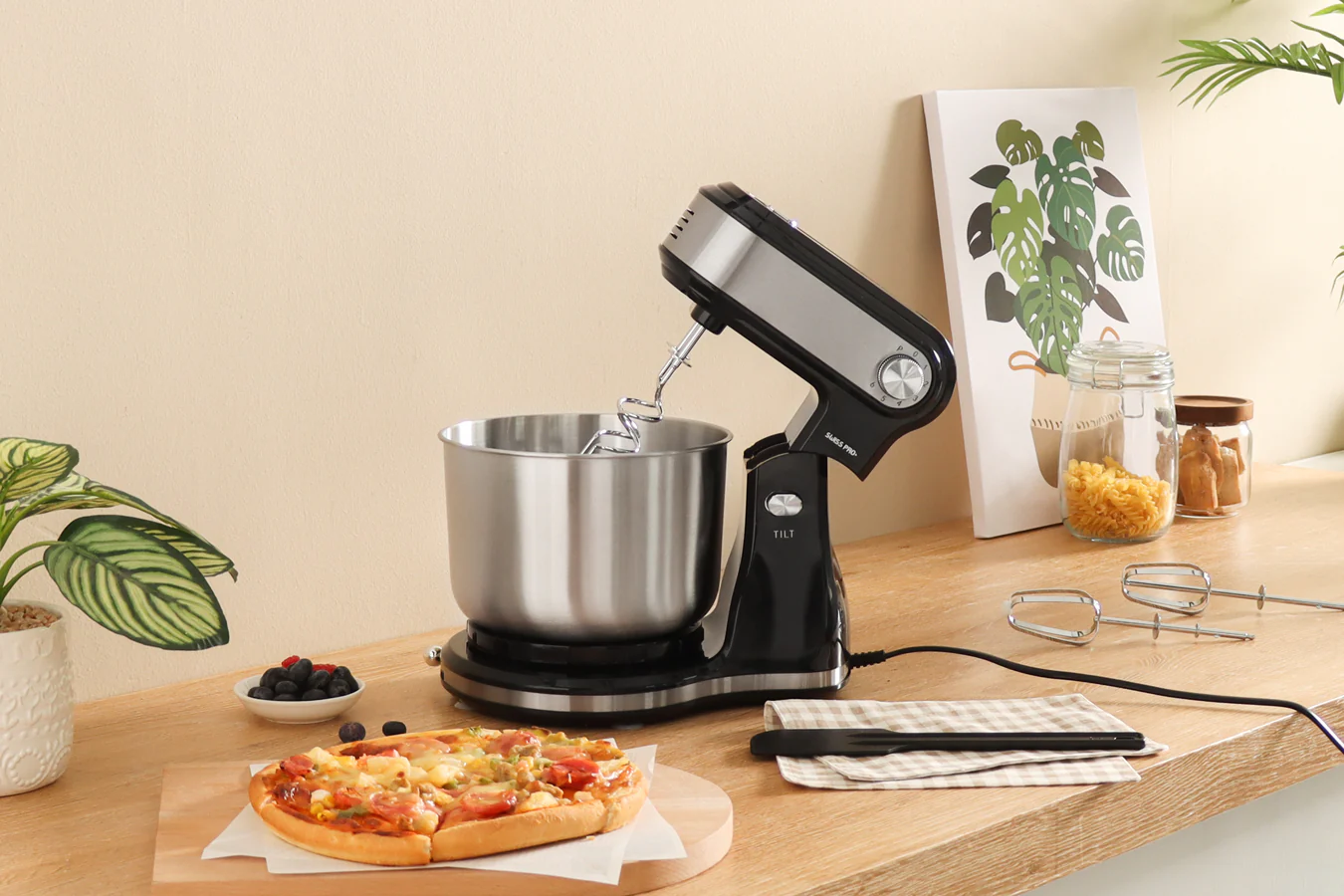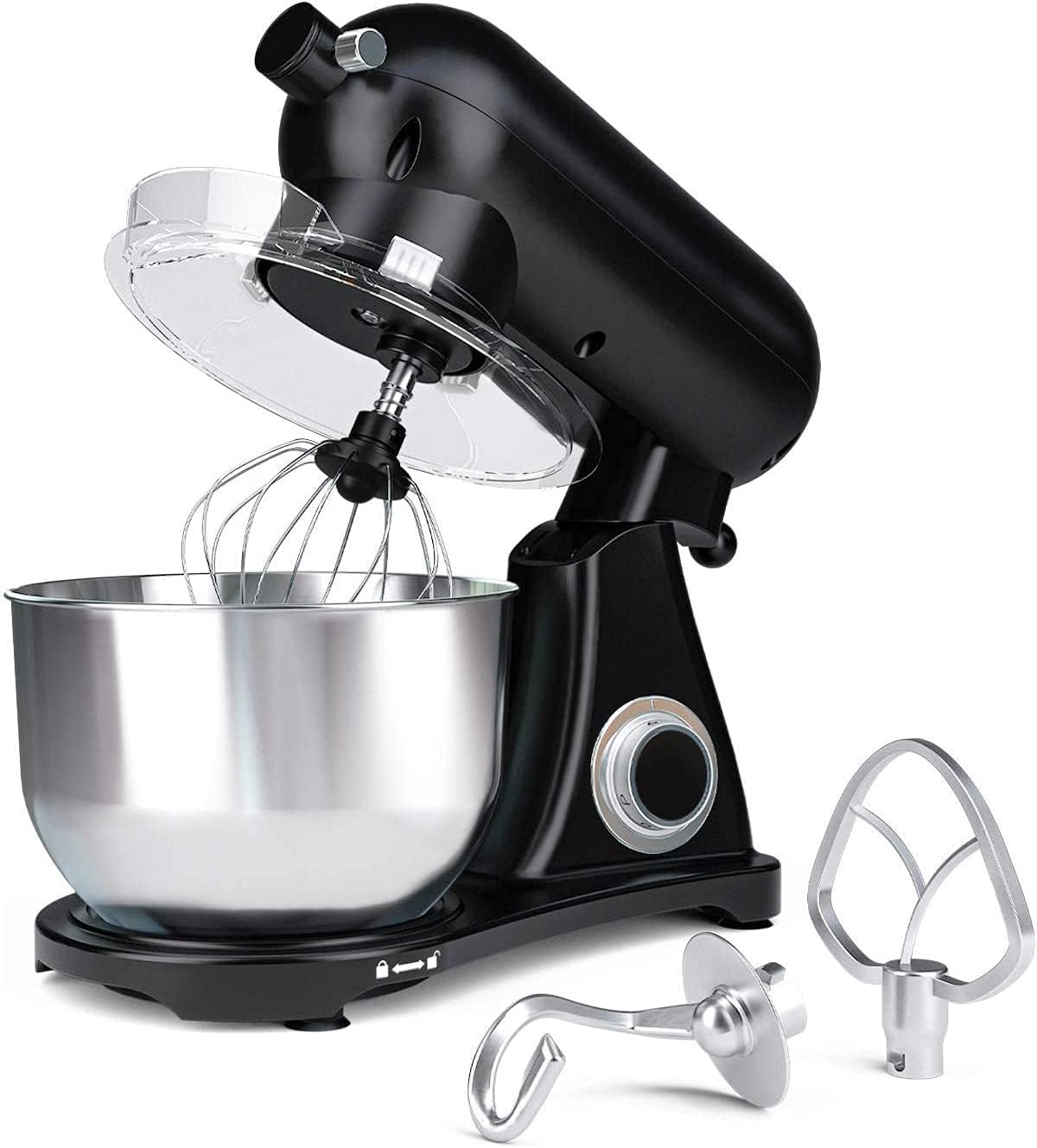Hello fellow bakers and kitchen adventurers! As the voice behind Stand Mixer Pro, I’ve seen it all—from perfect meringues to stubborn, lumpy doughs. One of the most common frustrations I hear is about that pesky layer of unmixed flour at the bottom of the bowl. Sound familiar? Before you blame the recipe, let’s talk about a simple, game-changing calibration trick. So, What Is The Dime Test For A Kitchenaid Mixer? It’s a brilliantly simple method to ensure your beater is at the perfect height, guaranteeing flawless mixing every single time. It’s the secret handshake among serious bakers, and today, I’m letting you in on it.
This simple diagnostic is the key to unlocking your mixer’s full potential, transforming it from a good kitchen appliance into a truly indispensable partner. Let’s dive in and get your machine dialed in to perfection.
Why Beater-to-Bowl Clearance is a Game Changer
Before we grab a dime, it’s crucial to understand why this matters. Your KitchenAid mixer uses a brilliant piece of engineering called planetary mixing action. This means the beater spins on its own axis while also orbiting around the bowl. Think of it like the Earth spinning as it revolves around the sun. This action is designed to cover the entire surface area of the bowl for thorough, even mixing.
However, if there’s too much space between the bottom of your beater and the surface of the bowl—what we call the beater-to-bowl clearance—that planetary action can’t do its job properly.
- Too High: The beater skims over the ingredients at the bottom. This leaves you with that dreaded unmixed flour, stubborn butter chunks in your creamed sugar, or egg yolks that never quite get incorporated. You end up constantly stopping the machine to scrape the bowl, defeating the purpose of a hands-free stand mixer.
- Too Low: The beater scrapes against the bottom of the stainless steel or glass bowl. This can cause a few problems. You might hear an unpleasant grinding sound, see grey or black streaks in your food from metal residue, or even chip the coating on your beater or damage the bowl itself over time.

The sweet spot is a clearance that is close enough to incorporate everything without actually touching. And that’s precisely where the dime test comes in.
“Proper calibration isn’t just a technical step; it’s the foundation of consistency in baking,” notes pastry chef and equipment specialist, John Ackerman. “The dime test ensures your machine performs as intended, giving you predictable and professional results from your recipes every single time.”
How to Perform the KitchenAid Dime Test: A Step-by-Step Guide
Ready to see if your mixer is up to snuff? Grab a U.S. dime (or a coin of similar thickness if you’re outside the U.S.). This is the only tool you’ll need for the diagnostic part. Let’s get this done.
- Safety First! Unplug your KitchenAid stand mixer from the wall outlet. Never make adjustments or place your hands near the beater shaft when the machine is plugged in.
- Attach the Right Tool: Place your clean, empty mixing bowl into the clamping plate and lock it in place. For tilt-head models, push down on the back until it clicks. For bowl-lift models, ensure the handles are secured over the pins.
- Select the Flat Beater: The dime test for a KitchenAid mixer is performed using the flat beater attachment (also known as the paddle attachment). Attach it to the beater shaft as you normally would, locking it into place.
- Raise the Bowl: If you have a bowl-lift model, raise the bowl to its highest locked position. If you have a tilt-head model, lower the head and lock it down.
- Place the Dime: Drop the dime into the center of the mixing bowl.
- The Moment of Truth: Plug your mixer back in. Turn the mixer on to the lowest speed setting, “Stir.”
- Observe the Dime: Watch the dime closely as the flat beater moves around the bowl. This is where you diagnose the clearance.
Reading the Results: What Is Your Dime Telling You?
The behavior of the dime will tell you everything you need to know about your mixer’s current calibration.
- The Beater Misses the Dime Completely: If the flat beater passes over the dime without touching it at all, your beater is too high. This is the most common issue and the primary reason for ingredients being left at the bottom of the bowl.
- The Beater Hits the Dime Hard and Pushes It Aggressively: If the beater smacks the dime and sends it flying around the bowl on every pass, your beater is too low. It’s likely scraping the bottom of your bowl, which can lead to damage.
- The Beater Gently Nudges the Dime: This is the perfect result. The flat beater should just barely make contact with the dime, gently pushing it forward about a half-inch to an inch with each pass. It shouldn’t get stuck, and it shouldn’t be ignored. This is the ideal clearance.
Making the Adjustment: The Magic Screw
So, your clearance is off. No need to panic! KitchenAid designed these machines to be easily adjusted. The key is a small, single adjustment screw. Finding it is the only tricky part.
For Tilt-Head Models:
The adjustment screw is located in the “neck” of the mixer, right where the head pivots. You’ll see it if you tilt the head back. It’s usually a flat-head screw.
For Bowl-Lift Models:
The screw is located on the central column of the mixer body, just above where the bowl-lift handle is. It’s often a bit hidden, but it’s there.
The Adjustment Process:
- Unplug the mixer again. Safety is paramount.
- Use a flat-head screwdriver.
- To Lower the Beater (if it was too high): Turn the screw counter-clockwise (left). This raises the head slightly on a tilt-head model, which in turn lowers the beater’s position inside the bowl. For bowl-lift models, it adjusts the mechanism to bring the beater closer.
- To Raise the Beater (if it was too low): Turn the screw clockwise (right). This lowers the head on a tilt-head model, creating more space, or raises the beater on a bowl-lift model.
Make very small adjustments at a time—a quarter turn is often enough. After each small adjustment, lock the head or raise the bowl, and re-run the dime test until you achieve that perfect, gentle nudge.
Does the Dime Test Apply to All Attachments?
This is a fantastic question we get all the time at Stand Mixer Pro. The short answer is yes and no.
The dime test for a KitchenAid mixer specifically calibrates the machine for the flat beater. Since the dough hook and wire whisk have different shapes and functions, their optimal clearance will naturally differ slightly. However, by setting the correct clearance for the flat beater, you are setting the machine’s base calibration correctly. This generally puts the other attachments within their ideal working range.
- Dough Hook: The dough hook is designed to push and fold dough against the sides and bottom of the bowl. It shouldn’t scrape, but it needs to be close enough to effectively knead the entire mass of dough. Calibrating with the flat beater usually solves most dough-kneading issues.
- Wire Whisk: The whisk is the most delicate attachment. It should come very close to the bottom to properly aerate small quantities of egg whites or cream, but it should never touch. If your whisk is hitting the bowl after a proper dime test, it may be slightly bent and need gentle reshaping.
Frequently Asked Questions (FAQ)
Q: Why is my KitchenAid not mixing the bottom of the bowl?
A: The most common reason is that the beater-to-bowl clearance is too high. Performing the dime test for a KitchenAid mixer will help you diagnose this and adjust the beater to the correct height, ensuring all ingredients are properly incorporated.
Q: Can I use a different coin for the dime test?
A: A U.S. dime is the standard because its thickness (1.35mm) is the ideal clearance specified by KitchenAid. If you don’t have one, you can use a folded piece of paper or another object of similar thickness, but a dime is the most reliable tool for the job.
Q: How often should I perform the dime test?
A: It’s a good idea to check it when you first get your mixer and then perhaps once a year or if you notice mixing performance has declined. The calibration can shift slightly over time with heavy use or if the mixer is moved frequently.
Q: What if I adjust the screw and nothing happens?
A: First, ensure you are turning it in the correct direction (counter-clockwise to lower, clockwise to raise). Make small, quarter-turn adjustments. If there is still no change, there could be a deeper mechanical issue, and it may be time to contact KitchenAid customer service for support.
Q: Does the dime test work for all KitchenAid mixer models?
A: Yes, the principle of the dime test and the adjustment screw applies to virtually all KitchenAid stand mixer models, including the Classic, Artisan, Professional, and Pro-Line series, whether they are tilt-head or bowl-lift designs. The location of the screw is the only major difference.
Your Mixer, Mastered
There you have it. The secret to a perfectly calibrated stand mixer isn’t a secret at all—it’s just a simple dime and a few minutes of your time. By understanding what is the dime test for a KitchenAid mixer and how to perform it, you are taking control of your machine and ensuring it works for you, not against you.
No more scraping, no more unmixed pockets of flour, and no more frustrating bakes. You’ve invested in a powerful, iconic piece of kitchen equipment; now you have the knowledge to fine-tune it like a pro. Go ahead, give it a try, and unlock a new level of consistency and joy in your baking.
Have you performed the dime test before? Share your experience or ask any lingering questions in the comments below! We love hearing from our community of passionate home cooks.